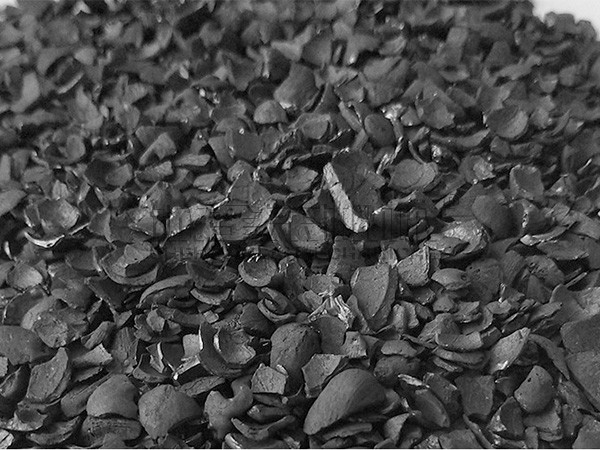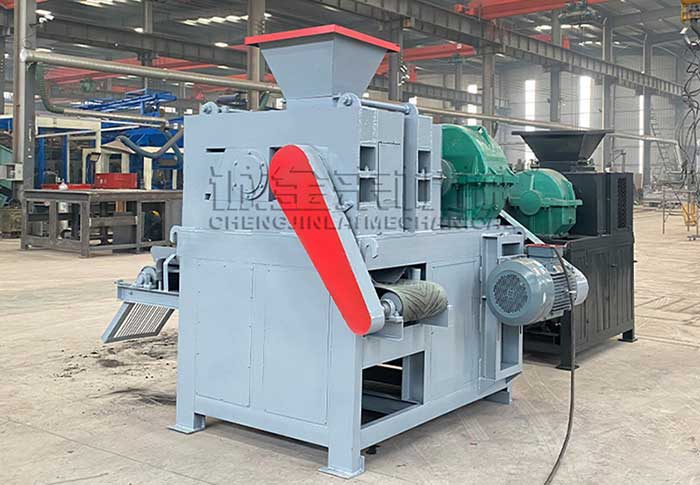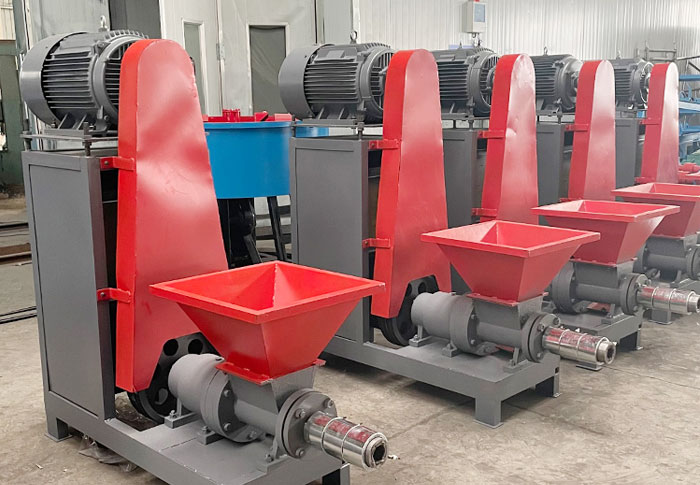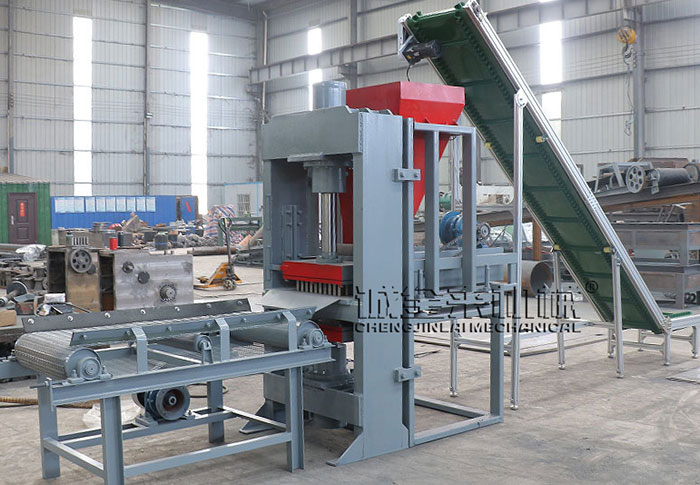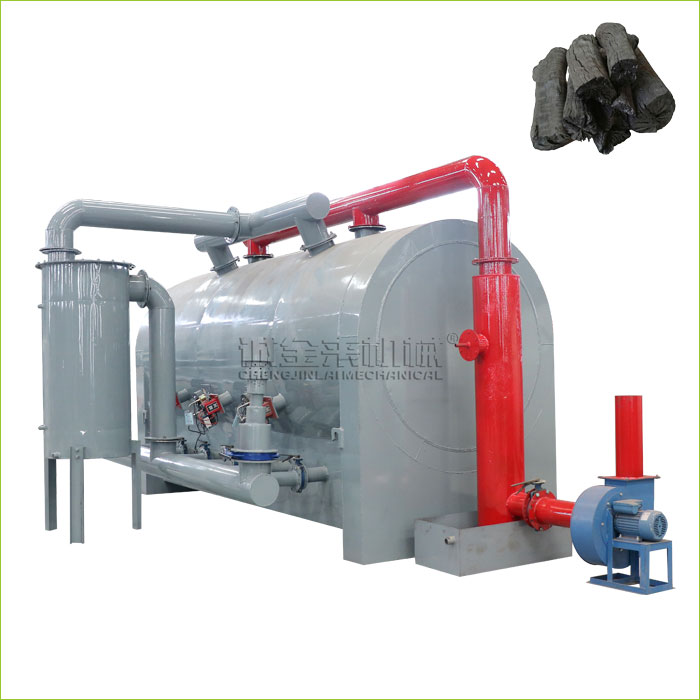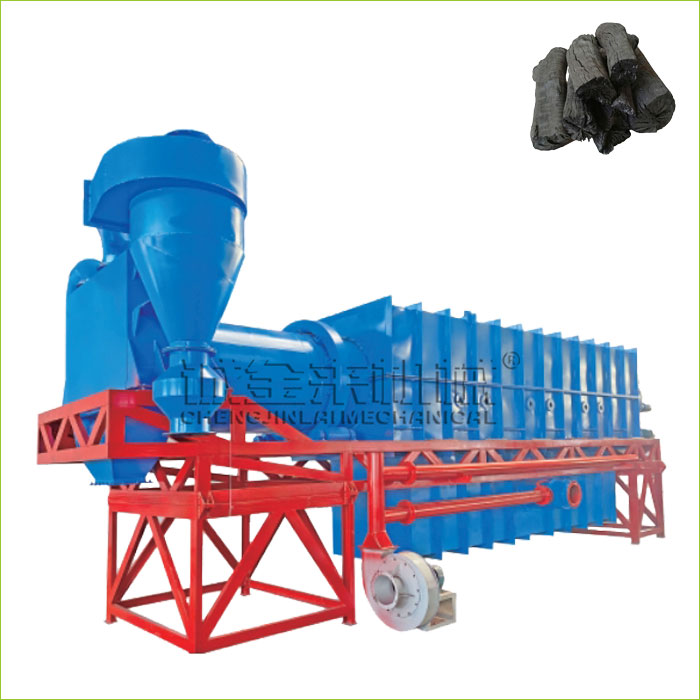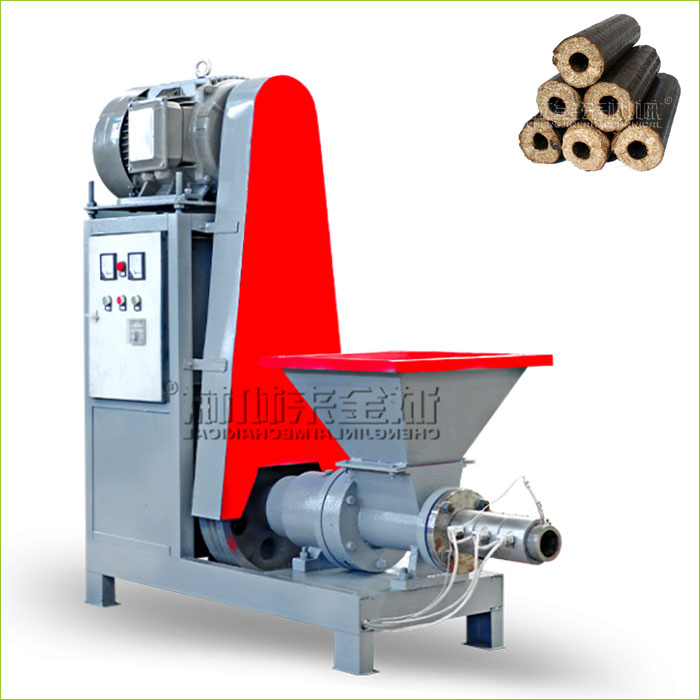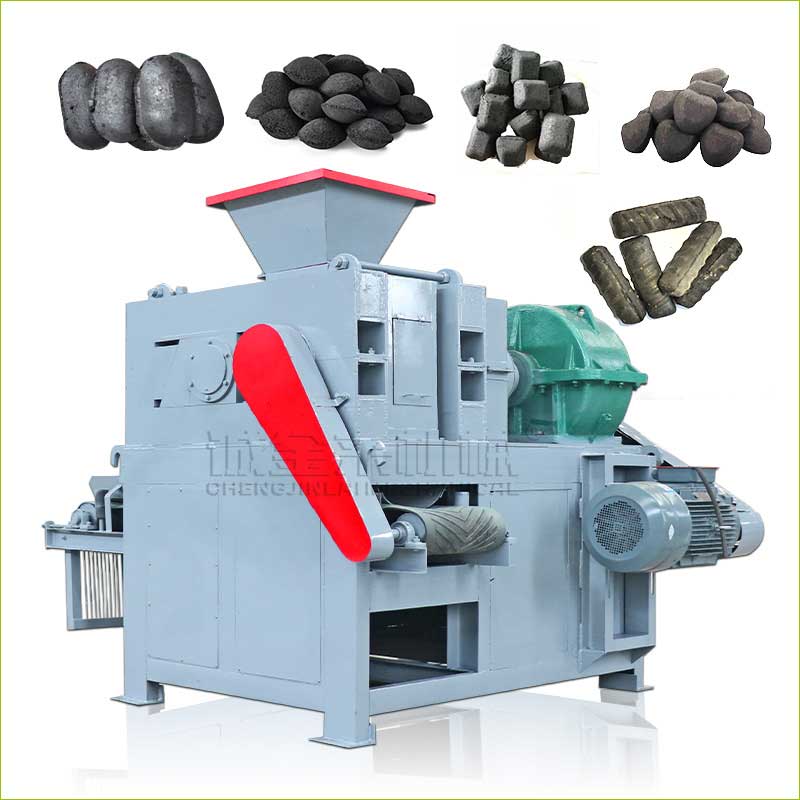The Charcoal Briquette Production Line efficiently converts biomass into high-density briquettes, ensuring sustainable, cost-effective, and scalable fuel production. This Briquette Production Line enhances efficiency, reduces waste, and maximizes output for industrial applications.
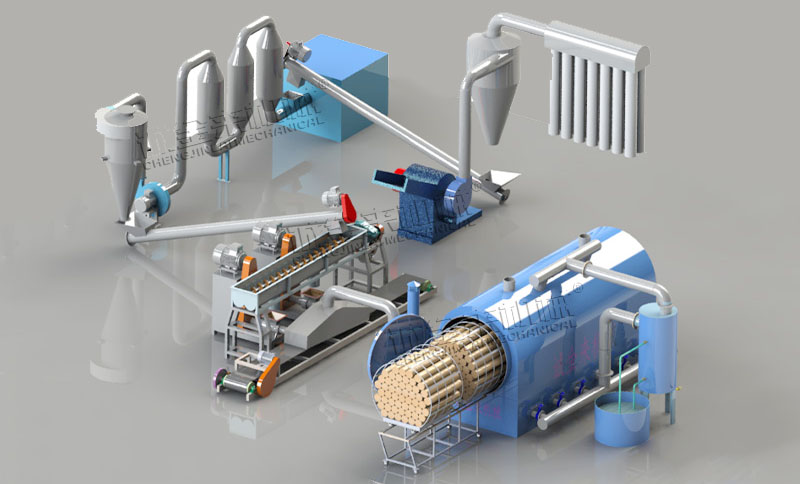
This Charcoal Briquette Production Line is ideal for charcoal manufacturers, biomass processing plants, and renewable energy businesses. Companies aiming to reduce production costs while maintaining high output will benefit most. Small-to-medium enterprises and large-scale industries seeking eco-friendly, efficient, and scalable solutions will find this system highly valuable. By utilizing biomass waste, users can create a sustainable fuel source while meeting growing market demand.
Charcoal Briquette Production Process
Charcoal briquette production involves converting biomass or other carbon-rich materials into compact, uniform briquettes that can be used as fuel. The process typically includes several key steps: material preparation→carbonization→mixing with a binder→briquetting→and drying. Below is an overview of the charcoal briquette production process:
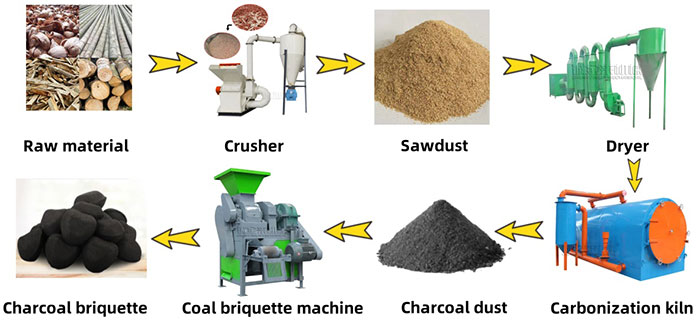
1. Material Selection and Preparation
Raw Materials: Common materials include wood chips, sawdust, agricultural waste (e.g., rice husks, coconut shells, corn cobs), and other biomass.
Drying: The raw materials are dried to reduce moisture content, which is essential for efficient carbonization and briquetting.
Size Reduction: Materials are crushed or ground into smaller particles to ensure uniformity and improve the carbonization process.
2. Carbonization
The dried and prepared biomass is heated in a low-oxygen environment (pyrolysis) to convert it into charcoal.
Process:
Biomass is placed in a carbonization kiln or retort.
It is heated to temperatures between 300°C and 500°C, depending on the material.
Volatile gases and moisture are driven off, leaving behind carbon-rich charcoal.
The resulting charcoal is then crushed into a fine powder for briquette production.
3. Mixing with a Binder
The charcoal powder is mixed with a binder to help the briquettes hold their shape. Common binders include:
Starch (e.g., cassava or corn starch)
Molasses
Clay
Tar or pitch
Water is often added to the mixture to achieve the right consistency for molding.
4. Briquetting
The charcoal-binder mixture is fed into a briquetting machine, which compresses the material under high pressure to form briquettes.
Briquetting Machines Types:
Piston press
Screw extruder
Hydraulic press
The shape and size of the briquettes can vary depending on the machine and mold used.
Here’s the 3 different charcoal briquette machine comparison table:
Machine Type Piston Press Screw Extruder Hydraulic Press Typical Shapes Cylindrical, Cubic, Pillow-shaped Hollow cylinder (honeycomb), Hexagonal prism, Spiral strips Spherical, Porous cubes, Custom relief (e.g. logo) Size Range Diameter: 20–100 mm
Length: 50–300 mmDiameter: 10–60 mm (hollow core 5–30 mm)
Length: 100–500 mm (cuttable)Unit weight: 50–5000 g
Thickness: 10–150 mmSurface Finish Horizontal stripes, slightly rough edges Smooth, may have spiral texture Mirror-smooth or fine texture (depends on mold polish) Forming Principle Unidirectional high pressure (50–100 MPa) piston extrusion Screw rotation with medium-low pressure (10–50 MPa) extrusion, heatable Closed-mold ultra-high pressure (up to 200 MPa) multi-directional compression Shape Limitations Only regular geometric shapes, no hollow structures Can produce porous or special shapes (e.g. star-shaped) Capable of 3D complex shapes (e.g. animal figures, relief patterns) Advantages Large-size high-density briquettes, low mold cost Continuous production, ideal for thin-walled/hollow briquettes Ultra-high precision, suitable for artistic designs and special applications Applications Industrial fuel blocks, metallurgical raw materials BBQ charcoal, mosquito coils, residential heating Activated carbon, premium fuels, decorative briquettes
5. Drying
The freshly formed briquettes are dried to remove excess moisture and harden them.
Drying can be done naturally (sun drying) or using artificial dryers (e.g., rotary dryers or conveyor dryers).
Proper drying ensures the briquettes burn efficiently and have a longer shelf life.
6. Packaging and Storage
Once dried, the briquettes are packaged in bags or other containers for storage and distribution.
Proper storage is essential to prevent moisture absorption, which can degrade the quality of the briquettes.
Charcoal Briquette Production Line Specifics
| Horizontal Carbonizing Furnace | |||
| Model | Capacity(t/h) | Dimension(m) | Weight(kg) |
| 1.5×3.0 | 1t/time | 1.5×3.0×2.2 | 1800 |
| Briquetting Machine | |||
| Model | Capacity(t/h) | Roller Size(mm) | Weight(kg) |
| 290 | 1-2 | 290×200 | 600 |
Briquette Production Line Features
- High Efficiency: Rapid processing speed increases briquette output and reduces production time.
- Energy-Saving Design: Optimized heat utilization lowers energy consumption while maintaining high performance.
- Versatile Raw Material Compatibility: Supports various biomass materials like wood, sawdust, and coconut shells.
Briquette Machine Plant Benifits
Superior Energy Efficiency: Uses less power while maintaining peak performance;
Industry-Leading Output: Processes more biomass per hour compared to standard models;
Exclusive Multi-Stage Processing: Ensures higher briquette density and durability than competitors
The High-Capacity Charcoal Briquette Production Line offers a complete and efficient solution for turning biomass into high-density charcoal briquettes. From raw material processing to final packaging, each stage is designed to maximize output, reduce waste, and improve energy efficiency. With advanced crushing, drying, briquetting, and carbonization technology, this system ensures consistent briquette quality and long-term durability.
Whether you are a charcoal manufacturer, biomass processing plant, or renewable energy business, this Briquette Production Line provides a cost-effective and scalable solution. By utilizing eco-friendly production methods, you can enhance profitability while contributing to a more sustainable future.
Upgrade your charcoal production today! Contact us now for a customized solution and get a quote.



